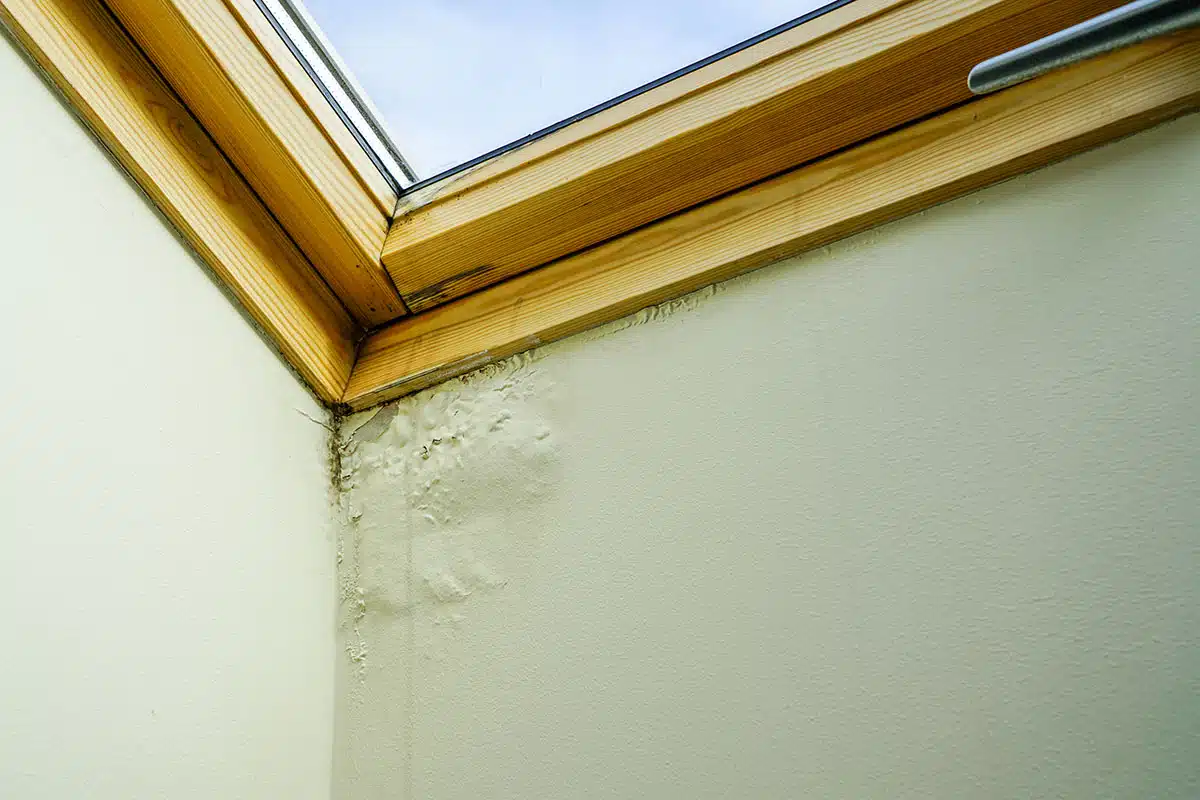To protect themselves from the harsh Mediterranean sun, the ancient Greeks built their structures from mudbrick and plaster. Clay roof tiles kept their building interiors cool and redirected water away from the walls. And plain wooden shutters and doors kept the sun (or rain) out. Together, these simple constructions are among the earliest examples of what we now call the building envelope.
In today’s buildings, mud has been replaced by steel and stone, and roof tiles can be made of metal, concrete, or even plastic. But the objective of the building envelope remains the same: to keep the outside out and the inside in. The roof, walls, windows, doors, and foundation that make up a building envelope not only provide protection from the elements, they also prevent damage and improve energy efficiency in modern buildings.
Functions of a Building Envelope
Building envelopes serve many functions, but the following are the most crucial ways they protect a building:
It’s been estimated that building owners could save as much as 37 percent on heating and cooling costs simply by improving the airtightness of their building’s envelope.
Water Barrier
Protecting a structure from water damage is one of the most important functions of a building envelope. But it’s not just the roof and walls that keep water out. Other components play a crucial role as well:
- Flashing, to keep water out of joints
- Siding, to prevent water from seeping through exterior walls, especially brick or stone walls with permeable mortar
- Gutters, to divert water away from the structure
- Underlayment/vapor barriers, to keep moisture from penetrating walls, ceilings, and floors
- Sealants and weatherstripping, to fill gaps between windows and doors
The consequences of a failed water barrier can be catastrophic. Even small amounts of moisture can cause wood and other building materials to deteriorate over time. It can erode the foundation and weaken the structural integrity of a building, putting its occupants in danger. Moisture can also cause mold, which not only destroys building materials, but can also impact indoor air quality and create health issues for occupants.
Thermal Barrier
Another key job of a building envelope is to act as a thermal barrier. In its simplest form, a thermal barrier prevents the transfer of heat from the outside to the inside and vice versa. Walls, roofs, windows, and doors are all thermal barriers. Some ways to strengthen the thermal barrier include:
- Insulation, used in attics, foundations, floors, walls, and around windows
- Multi-pane windows and special reflective coatings
- Air-tight and multi-pane doors
- Sealants and weatherstripping, to prevent air leaks around windows and doors
Another important function of the thermal barrier is to reduce thermal bridging. Thermal bridging occurs when heat passes from a building’s interior to its exterior via a building element like a balcony or parapet. Since exterior building elements like balconies are often made of high thermal conductivity materials like concrete or steel, heat energy can be rapidly conducted from the building’s interior to the outside via these thermal bridges. Thermal bridges can be mitigated with improved insulation, triple-glazed windows, and air-to-air heat exchangers, among other solutions.
Air Barrier
A building envelope also operates as an air barrier, preventing outdoor air from getting in, and indoor air from getting out. This function is important for more than just temperature regulation. Buildings need some air circulation to prevent a buildup of moisture and to prevent condensation. But it’s a delicate balancing act, because too much circulating air can raise heating and cooling costs.
A poorly constructed or maintained building envelope can greatly impact indoor air quality, allowing outside pollutants such as wildfire smoke and allergens to penetrate indoor air. It can also decrease energy efficiency and increase heating and cooling costs. A compromised building envelope is one of the main causes of energy loss in a structure. That’s one reason why it’s been estimated that building owners could save as much as 37 percent on heating and cooling costs simply by improving the airtightness of their building’s envelope.

To be airtight, an air barrier must be continuous, with no gaps or holes. Seams where joints or panels meet should be sealed. Drywall and plywood are standard barrier materials, and used in combination with flexible materials like liquid membranes, they form an efficient continuous air barrier. Newer materials like rigid foam-board insulation and closed-cell spray foam are especially energy efficient because they prevent conditioned air from escaping, yet allow for the release of moisture.
Light and Sound Control
While the main purpose of a building envelope is to serve as a water, thermal, and air barrier, that’s not its only function. It also serves as a barrier to light and sound. Light barriers such as tinted windows are especially important because UV light can cause building materials to disintegrate, leading to costly repairs and replacements. Sound barriers like insulation ensure the comfort of a building’s occupants.
Energy Efficiency and the Building Envelope
At their essence, building envelopes are a barrier between the conditioned and unconditioned environment. In the summer, they keep the cool air in and the hot air out. In the winter, they keep the warm air in and the cold air out. But more than that, the building envelope plays an outsized role in determining a building’s energy efficiency.
A building that has a “tight” envelope not only protects the structure from damage, it also greatly reduces heating and cooling costs. Tight envelopes are well-sealed, mechanically ventilated, and typically have fewer moisture issues than those with “loose” envelopes.
Buildings with loose envelopes have more natural ventilation. Some structures, especially heritage buildings, were intentionally designed to take advantage of natural breeze patterns (think transom windows and cross ventilation). However, they suffer greater air loss and therefore cost more to heat and cool.
Building envelope technologies account for as much as 30 percent of the energy consumed in both residential and commercial buildings, according to the U.S. Department of Energy. And air leakage through building envelopes accounts for six percent of all energy consumed by commercial buildings, resulting in sometimes astronomical utility bills for commercial building owners. For this reason, when it comes to improving energy efficiency, proper building envelope maintenance is key.
Best Practices for Maintaining a Building Envelope
A well-functioning building envelope starts with quality construction. But it doesn’t end there. Envelopes must be inspected and maintained regularly to ensure that they’re operating efficiently. Weather events, degradation, and other damage can all impact a building envelope’s functionality, and the earlier these issues are caught, the better.
Cases of building envelope failure are not hard to find. One spectacular example occurred in Vancouver, where thousands of condominiums and townhomes constructed during a housing boom in the 1980s suffered major water infiltration. During what’s known as the “Leaky Condo Crisis,” water vapor was able to penetrate the buildings, which led to rot, rust, and mold that compromised structural integrity. The crisis has resulted in billions of dollars in damages, with legal battles and retrofitting that continues to this day.
The lesson learned is that when it comes to commercial building envelope maintenance, an ounce of prevention is worth a pound of cure. Even a small kink in the armor can lead to a big headache down the road, so it’s important to establish a regular maintenance schedule to catch problems early on. It can be tempting to put off inspections and maintenance when faced with limited time and resources, which is why having a schedule is important. Depending on the type of facility, inspections should occur at least once a quarter.
Inspecting a building envelope might seem like a herculean task, but one effective approach is to follow a “roof-to-floor” strategy:
- Roof: Inspect tiles, flashings, vents, fans, and other penetrations. Look for signs of water damage. Check corners, valleys, and gutters. And given that the roof is the most at-risk location for water ingress, be sure to conduct roof inspections at least twice a year.
- Walls: Visually inspect exterior walls for moisture intrusion, mold, or mildew. Check exterior siding. Pay particular attention to penetration joints and seals.
- Fenestrations: Check all windows, doors, skylights, or other fenestrations for water or moisture leaks, especially around frames. Ensure weatherstripping is in good shape.
- Floors and foundation: Inspect for signs of water seepage, cracks, or other damage. Keep an eye out for the telltale powdery signs of efflorescence. Confirm proper sloping to ensure that water doesn’t pool at the foundation.

Outside of visual inspections, there are specialized tools and tests for commercial building inspection that can help determine whether a building envelope is operating as it should. The gold standard in air leak detection is the blower door test, which measures a building’s airtightness. Another important tool is an infrared camera, which can be used to check for leaks by quickly locating hot (or cold) spots and thermal bridges. For hard-to-reach places, borescopes can provide visual data that’s otherwise inaccessible, and drones can be used to inspect tall buildings.
The Future of Building Envelope Design
Building envelopes have come a long way since the early days of mudbrick shelters. And their design continues to evolve. A push towards more sustainable building practices means laws are changing. In California, net zero buildings will be required of all new commercial construction by 2030, part of an effort to reduce greenhouse gas emissions and reduce energy consumption. An increased focus on energy efficiency means architects, designers, builders, and researchers are looking for new ways to reduce heating and cooling costs. Some alternatives on the horizon include:
- Green rooftops, in which plants, shrubs, and trees are planted atop a roof, providing an added layer of insulation.
- Adaptive materials such as smart windows, which darken or lighten based on temperature and light fluctuations.
- Self-healing concrete, in which bacteria or enzymes are added to concrete and activated when wet, automatically filling small gaps or cracks.
- Aerogel insulation, a silica-based product in which the liquid has been replaced with air, resulting in an extremely lightweight, solid, foam-like material.
- Photovoltaic curtain walls, which not only provide an extra layer of protection, but also simultaneously generate power.
These innovations won’t become standard overnight. But their sustainability and energy efficiency ensure that future buildings will incorporate at least some of these technologies.
